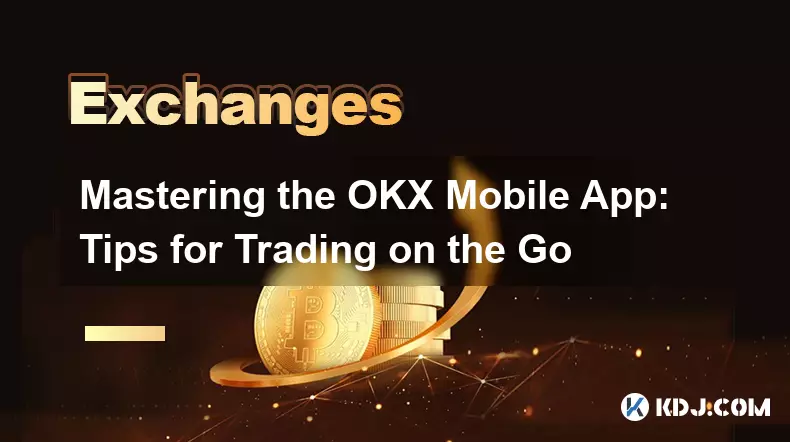-
 bitcoin
bitcoin $107015.826941 USD
-2.18% -
 ethereum
ethereum $3637.352324 USD
-5.18% -
 tether
tether $0.999831 USD
-0.02% -
 xrp
xrp $2.338078 USD
-6.23% -
 bnb
bnb $998.272150 USD
-6.97% -
 solana
solana $167.598257 USD
-10.12% -
 usd-coin
usd-coin $0.999863 USD
0.01% -
 tron
tron $0.282573 USD
-5.09% -
 dogecoin
dogecoin $0.169891 USD
-7.39% -
 cardano
cardano $0.557554 USD
-7.03% -
 hyperliquid
hyperliquid $39.914802 USD
-5.85% -
 chainlink
chainlink $15.414549 USD
-9.97% -
 bitcoin-cash
bitcoin-cash $510.361911 USD
-4.26% -
 ethena-usde
ethena-usde $0.999194 USD
-0.03% -
 stellar
stellar $0.282092 USD
-6.07%
How to find my margin trading history on KuCoin?
Access your margin trading history on KuCoin by logging in, navigating to Margin Trading, then checking Orders, Borrowing, and Repayment tabs for detailed records.
Oct 14, 2025 at 02:18 pm

Accessing Your Margin Trading History on KuCoin
1. Log in to your KuCoin account using your registered email and password. Ensure that two-factor authentication is enabled for added security. Once logged in, navigate to the top-right corner of the dashboard where your profile icon is located.
2. Click on the 'Markets' dropdown menu located at the top navigation bar. From the options, select 'Margin Trading'. This will redirect you to the margin trading interface, where you can view all active pairs and open positions related to margin accounts.
3. On the margin trading page, locate the tab labeled 'Orders' or 'Trade History'. This section contains a detailed log of all executed margin trades, including both successful and canceled orders. You may need to toggle between sub-tabs such as 'Filled Orders', 'Borrowing Records', or 'Repayment History' depending on the type of data you're seeking.
4. To filter specific timeframes or trading pairs, use the date selector and dropdown menus available within the order history panel. You can narrow results by selecting particular cryptocurrencies like BTC/USDT or ETH/USDT, and specify ranges from the last 7 days up to several months.
5. For downloadable records, look for an option labeled 'Export' or a download icon (usually a downward arrow). Clicking this allows you to save your margin trading history in CSV format, which can be opened with spreadsheet software for deeper analysis.
Understanding Key Components of Margin Trade Records
1. Each entry in your margin trading history includes essential details such as the trading pair, direction of trade (buy/sell), quantity executed, price per unit, and timestamp. These elements help verify transaction accuracy and support portfolio tracking.
2. Pay close attention to the 'Leverage' column if visible, as it indicates the multiplier applied during the trade. A higher leverage increases both potential gains and risks, making this information critical for performance evaluation.
The 'Interest Charged' field reflects fees accrued on borrowed funds and must be reviewed regularly to manage cost efficiency.3. Borrow and repayment logs are typically separated from trade executions but remain part of the overall margin activity. These show when assets were withdrawn from the lending pool and when they were returned, including any penalties for late repayments.
4. The status indicator—such as 'Filled', 'Partially Filled', or 'Liquidated'—provides insight into how each position concluded. Liquidation events appear distinctly and often include system-generated notes explaining triggering conditions like insufficient collateral.
Locating Borrowing and Repayment Details
1. Within the same margin interface, switch to the 'Loans' or 'Liabilities' tab to access borrowing specifics. Here, you’ll find a chronological list of all assets borrowed across different trading pairs.
2. Each loan entry displays the borrowed amount, annual interest rate, opening date, and current outstanding balance. Some entries may also show auto-renewal settings if enabled prior to expiration.
3. The repayment history section lists every payment made toward principal and interest. Transactions here directly affect your available borrowing capacity and influence future interest calculations.
If a repayment was missed, the system may flag the account with a penalty notice; checking this section frequently helps avoid unnecessary charges.4. Users participating in peer-to-peer margin lending should also review their lending activity separately under the 'P2P Lending' section, where earnings from providing liquidity are tracked independently from personal borrowing actions.
Security and Verification Practices
1. Always confirm that login attempts and device access align with your own activity. Unfamiliar sessions should be terminated immediately through the 'Security Settings' page.
2. Enable email and SMS alerts for all margin-related operations, including new loans, repayments, and liquidations. Real-time notifications enhance responsiveness to market movements and reduce exposure to sudden losses.
3. Regularly audit your trading history for discrepancies, especially after high-volatility periods. Unexpected trades or interest adjustments warrant immediate contact with KuCoin support for investigation.
Never share your API keys or recovery phrase with third-party services claiming to optimize margin performance.4. Use encrypted storage solutions when saving exported trading records locally. Avoid cloud platforms without end-to-end encryption to protect sensitive financial data from unauthorized access.
Frequently Asked Questions
How long does KuCoin retain margin trading records?KuCoin maintains user trading history for several years, though exact retention periods may vary. Users are encouraged to export important data periodically as older records might not always remain accessible through the web interface.
Can I view margin trades through the KuCoin mobile app?Yes, the KuCoin mobile application supports full access to margin trading history. Navigate to the 'Assets' tab, select 'Margin Account', then tap on 'Order History' or 'Loan Records' to review relevant details.
What should I do if a margin trade is missing from my history?First, adjust the date filters and ensure you’re viewing the correct trading pair. If the transaction still doesn’t appear, gather timestamps and approximate values, then submit a support ticket with screenshots for verification.
Are interest charges included in the trade history table?Interest charges are not listed within the main trade execution table. They appear separately under the 'Interest Records' or 'Billing' section, categorized by settlement date and charged asset type.
Disclaimer:info@kdj.com
The information provided is not trading advice. kdj.com does not assume any responsibility for any investments made based on the information provided in this article. Cryptocurrencies are highly volatile and it is highly recommended that you invest with caution after thorough research!
If you believe that the content used on this website infringes your copyright, please contact us immediately (info@kdj.com) and we will delete it promptly.
- Sequans, Bitcoin, and Debt Reduction: A NYC Perspective on a Bold Move
- 2025-11-05 03:50:12
- XRP Price Wobbles: Death Cross Looms as Ripple Token Navigates Choppy Waters
- 2025-11-05 04:10:01
- Altcoins, Perpetual Tokens, and ETH Price: Navigating the Crypto Current
- 2025-11-05 03:55:01
- Tether's Triumph: $10 Billion Profits and a Treasury Milestone
- 2025-11-05 03:55:12
- Crypto Coins with Growth Potential: Unearthing 2025's Hidden Gems
- 2025-11-05 04:00:01
- MoonBull, Crypto Presales, and Solana WLFI: Riding the Wave to Big Gains
- 2025-11-05 03:25:02
Related knowledge

Common Mistakes to Avoid on OKX: A Guide for New Traders
Nov 04,2025 at 03:37pm
Understanding the Interface Before Trading1. New traders often jump into placing orders without fully exploring the OKX platform layout. Taking time t...

OKX TradingView Integration: A Guide to Advanced Chart Analysis
Nov 02,2025 at 03:37am
OKX and TradingView: Bridging the Gap for Professional Traders1. OKX, one of the leading cryptocurrency exchanges, has integrated with TradingView to ...

Mastering the OKX Mobile App: Tips for Trading on the Go
Nov 05,2025 at 01:19am
Streamlined Navigation for Efficient Trading1. The OKX mobile app features a clean and intuitive interface that allows traders to access key functions...

How to Transfer Crypto to Your OKX Wallet: A Secure Tutorial
Nov 04,2025 at 11:39pm
Understanding the Basics of Crypto Transfers to OKX1. Before initiating any transfer, it’s essential to understand that OKX supports a wide range of c...

OKX Perpetual Swaps: A Comprehensive Trading Strategy Guide
Nov 04,2025 at 07:05pm
Understanding OKX Perpetual Swaps Mechanics1. Perpetual swaps on OKX are derivative contracts that allow traders to speculate on cryptocurrency price ...

OKX Trading API: A Developer's Guide to Secure Integration
Nov 02,2025 at 01:01am
Understanding the OKX Trading API Infrastructure1. The OKX Trading API is built on REST and WebSocket protocols, enabling developers to access real-ti...

Common Mistakes to Avoid on OKX: A Guide for New Traders
Nov 04,2025 at 03:37pm
Understanding the Interface Before Trading1. New traders often jump into placing orders without fully exploring the OKX platform layout. Taking time t...

OKX TradingView Integration: A Guide to Advanced Chart Analysis
Nov 02,2025 at 03:37am
OKX and TradingView: Bridging the Gap for Professional Traders1. OKX, one of the leading cryptocurrency exchanges, has integrated with TradingView to ...

Mastering the OKX Mobile App: Tips for Trading on the Go
Nov 05,2025 at 01:19am
Streamlined Navigation for Efficient Trading1. The OKX mobile app features a clean and intuitive interface that allows traders to access key functions...

How to Transfer Crypto to Your OKX Wallet: A Secure Tutorial
Nov 04,2025 at 11:39pm
Understanding the Basics of Crypto Transfers to OKX1. Before initiating any transfer, it’s essential to understand that OKX supports a wide range of c...

OKX Perpetual Swaps: A Comprehensive Trading Strategy Guide
Nov 04,2025 at 07:05pm
Understanding OKX Perpetual Swaps Mechanics1. Perpetual swaps on OKX are derivative contracts that allow traders to speculate on cryptocurrency price ...

OKX Trading API: A Developer's Guide to Secure Integration
Nov 02,2025 at 01:01am
Understanding the OKX Trading API Infrastructure1. The OKX Trading API is built on REST and WebSocket protocols, enabling developers to access real-ti...
See all articles










































































